
Welcome to the fourth instalment of 'UQ by design', a 12-part Contact series celebrating the beauty and abundance of UQ's cultural assets. Join us each month as we take you on a virtual guided tour across UQ's three campuses, providing a brief overview of the pieces and where you can find them. This month, we take a look at the sentinel statues dotted across the campuses to honour significant people in history.
In 1996, property professional Angelo Efstathis gifted a bronze statue of Hippocrates by renowned Brisbane sculptor Phillip Piperides (1956–) to the UQ Medical School. Created to recognise the ancient Greek physician’s status as the father of medicine, it now stands proudly in the grounds of UQ's Herston campus, reminding all students of the Hippocratic oath they will soon adopt to guide their professional conduct.
To commemorate the millennium of Christianity in Russia, the Bicentenary of Australia and 25 years of Russian Studies at UQ, in 1988, the Russian community of Brisbane (led by Paul Noskoff and family) commissioned Brisbane sculptor George Virine (1920–2017) to create a statue of St Vladimir, which they presented to the University, the City of Brisbane and the people of Australia in 1995. Vladimir the Great was the Grand Prince of Kiev, who converted from paganism to Christianity in 988 CE and introduced the faith to Russia. His statue – only one of six in the world – can be found overlooking the Brisbane River (near the CityCat ferry stop at St Lucia) in honour of his status as 'baptiser of all Russia'.
Created by Kathleen Shillam (1916–2002), the bronze bust of Dr Gertrude Langer (1908–84) immortalises the Austrian-born former Brisbane art critic and arts advocate. Both women were key figures in Brisbane’s early arts scene: Shillam as a working artist, UQ art tutor and co-founder of Sculptors Queensland with her husband, Len; and Langer as chief art critic for The Courier-Mail, founding member of the Queensland branch of the International Association for Art Critics and the Queensland division of the Arts Council of Australia, and the first fellow of the Queensland Art Gallery Foundation. Langer also supported her husband, Karl (a UQ lecturer), in his architectural practice. The bust is currently located near the Alumni Rainforest garden at St Lucia because Dr Langer enjoyed walking along that stretch of the river.
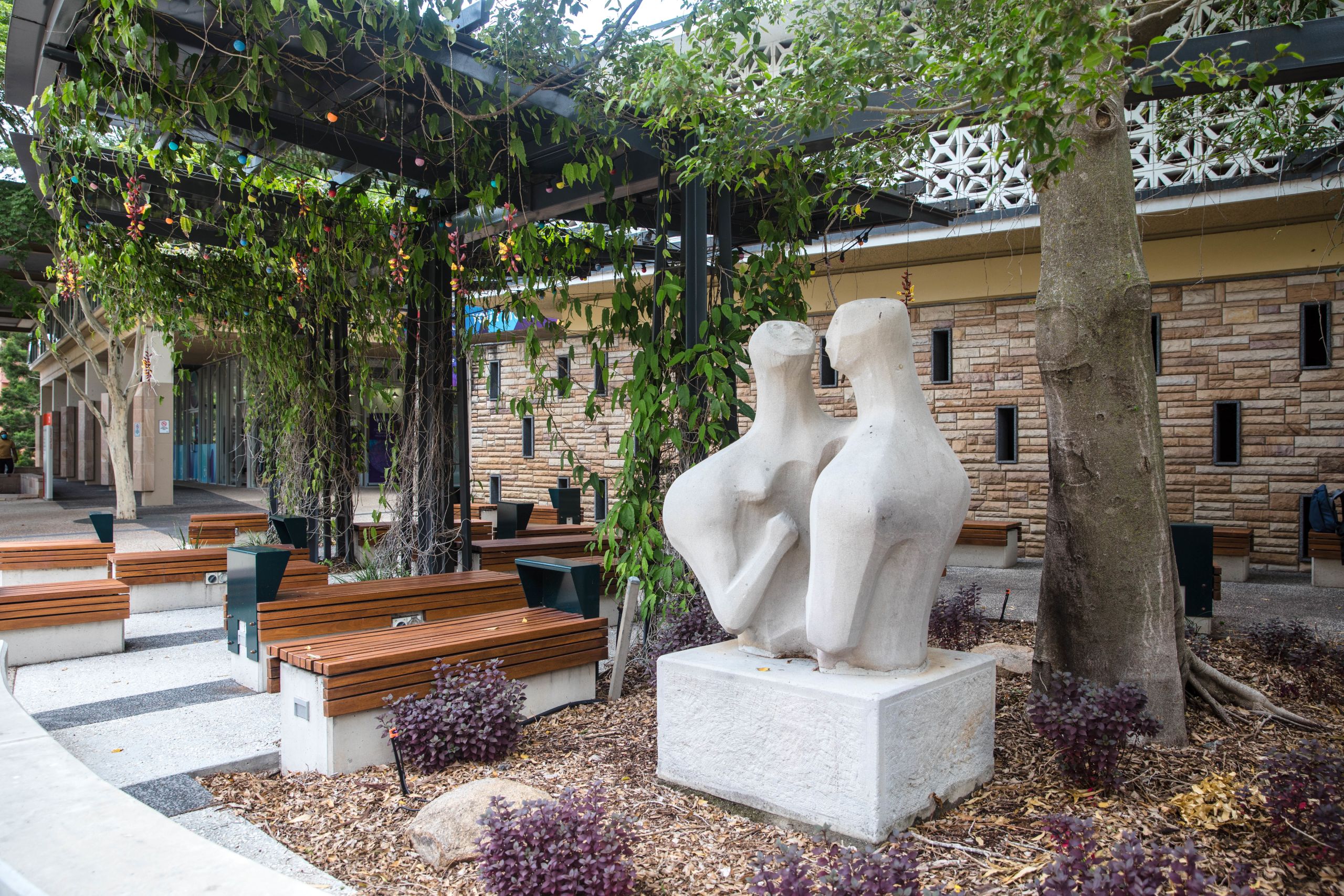
Union, by Leonard Shillam, 1960. Collection of The University of Queensland, purchased 1967.
Union, by Leonard Shillam, 1960. Collection of The University of Queensland, purchased 1967.
Carved from a three-ton block of pale-grey Helidon sandstone using hand tools only, the free-standing part-male, part-female sculpture with two heads represents close fraternity and unity. Entitled Union, the statue – located in St Lucia's Union Complex vicinity – was created by renowned Brisbane sculptor and co-founder of Sculptors Queensland, Leonard Shillam (1915–2005), in 1960. Shillam’s style was influenced by the European Contemporary Art Movement of the early 20th century and featured simplified and abstract forms, geometric angles and planes, and dramatic shapes.
Within the Great Court at UQ St Lucia are four wall statues of noted scientists in history. The first, carved at the left of the entrance to the Goddard building in 1989 by University Sculptor Dr Rhyl Hinwood AM, is of Charles Darwin (1809–82), who developed the theory of evolution. Depicted as a young man when visiting Australia for the first time in 1935, he wears a straw hat and carries a walking stick of twisted vines. He rests on a copy of his most famous book, The origin of species, while a great black bug of the Pampas climbs on his shoulder. The walking stick separates elements in the sculpture into two categories – fossils and live specimens – and features a Galapagos tortoise, earthworm, platypus, marine iguana, finches, barnacles, vine, carnivorous plant, orchid and primula.
To the right of the Goddard building entrance is a representation of Gregor Mendel (1822–84), who laid the mathematical foundation of the science of genetics through his experiments with plants. An Austrian monk, Mendel is shown wearing the robes of a Prelate and holding the staff and mitre hat, symbolic of his high office within the Church. The hat is embroidered with fuchsia flowers, a species he researched and developed. In the background are circles representing his meteorological record of sunspots, and about his waist are honeycomb and bees, which also interested him. In the foreground are four pea plants, one short and three tall, to demonstrate his experiments in plant hybridisation. Each plant is labelled with a lead tag bearing his initials.
Click on the photos below to reveal the full image
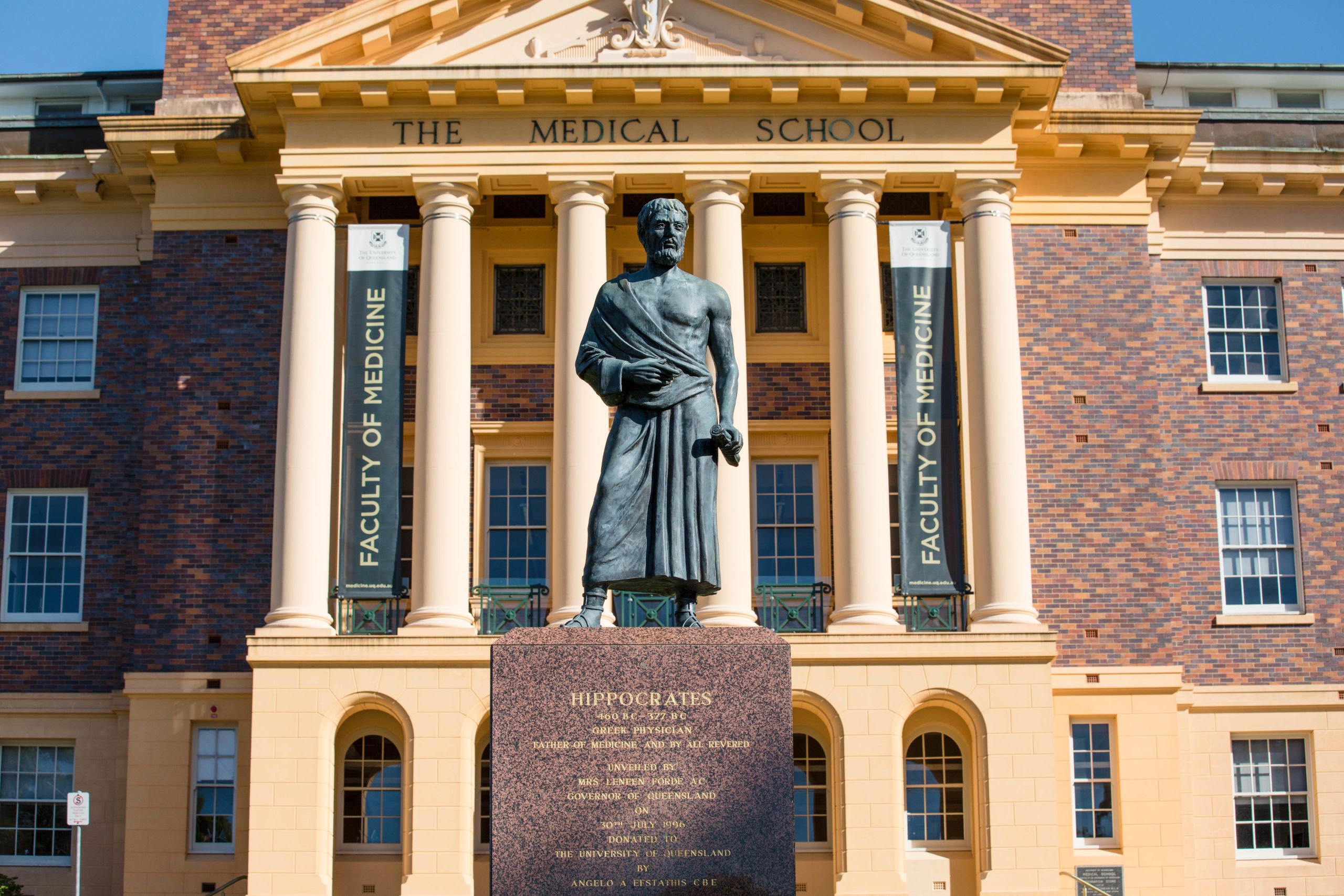
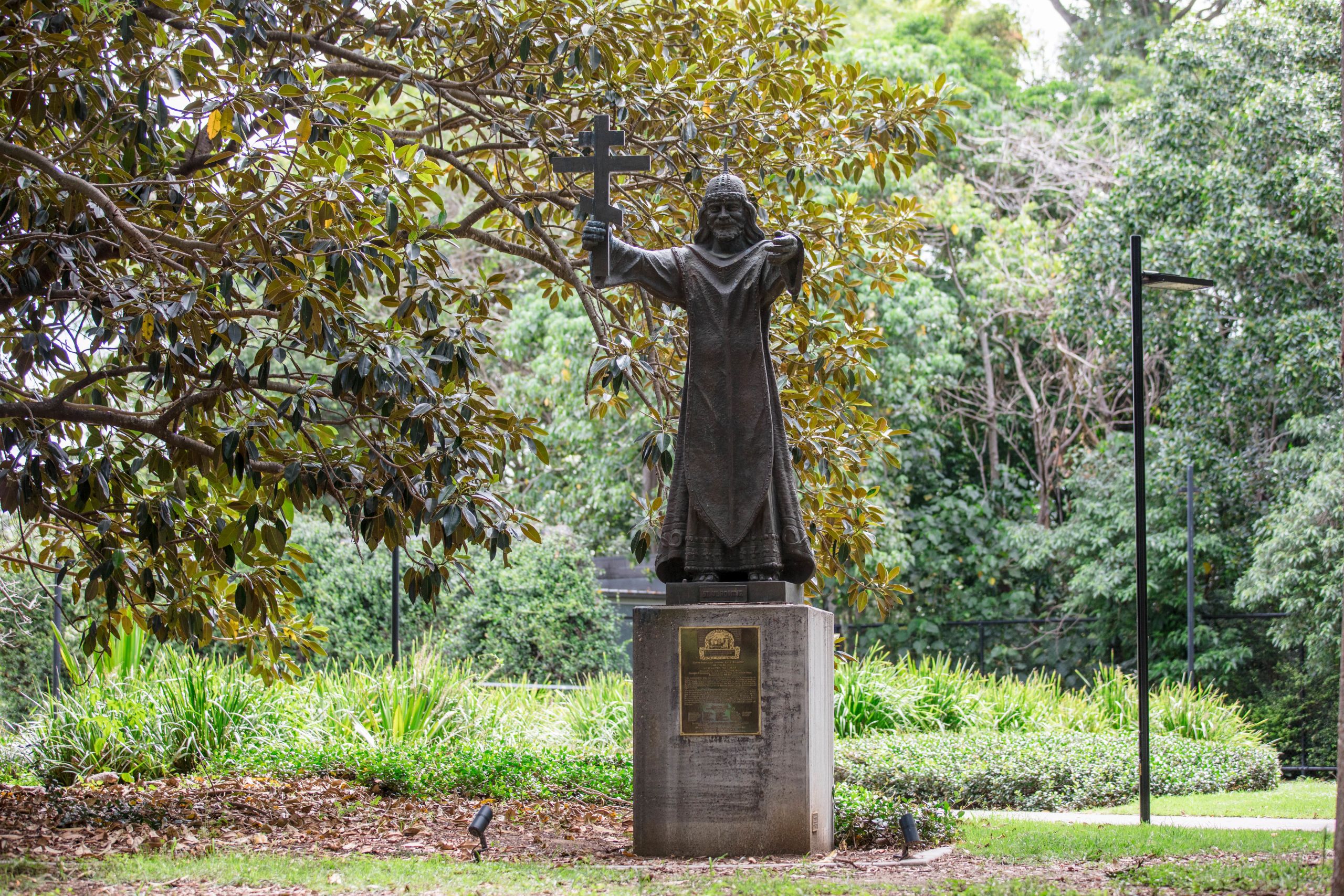
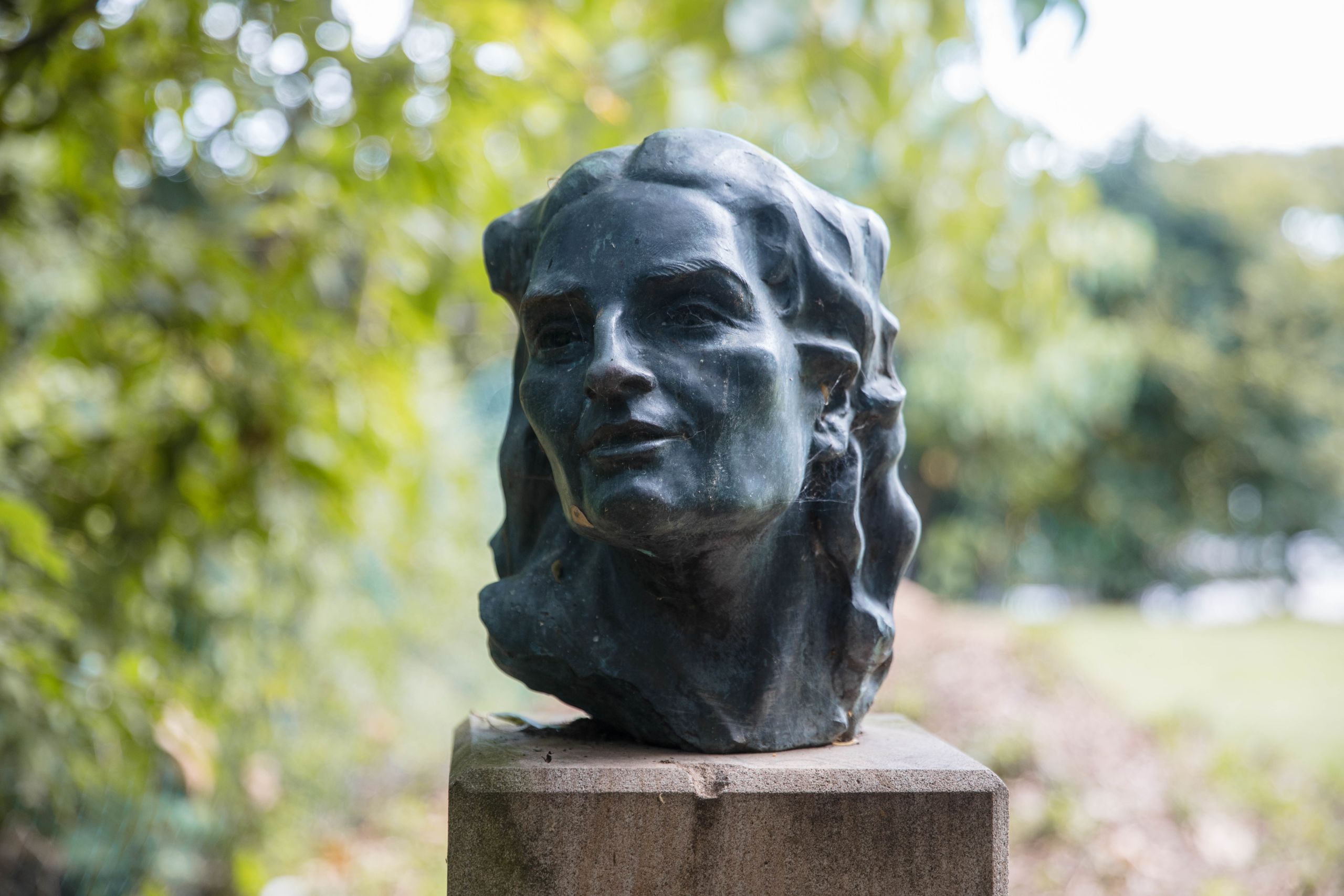
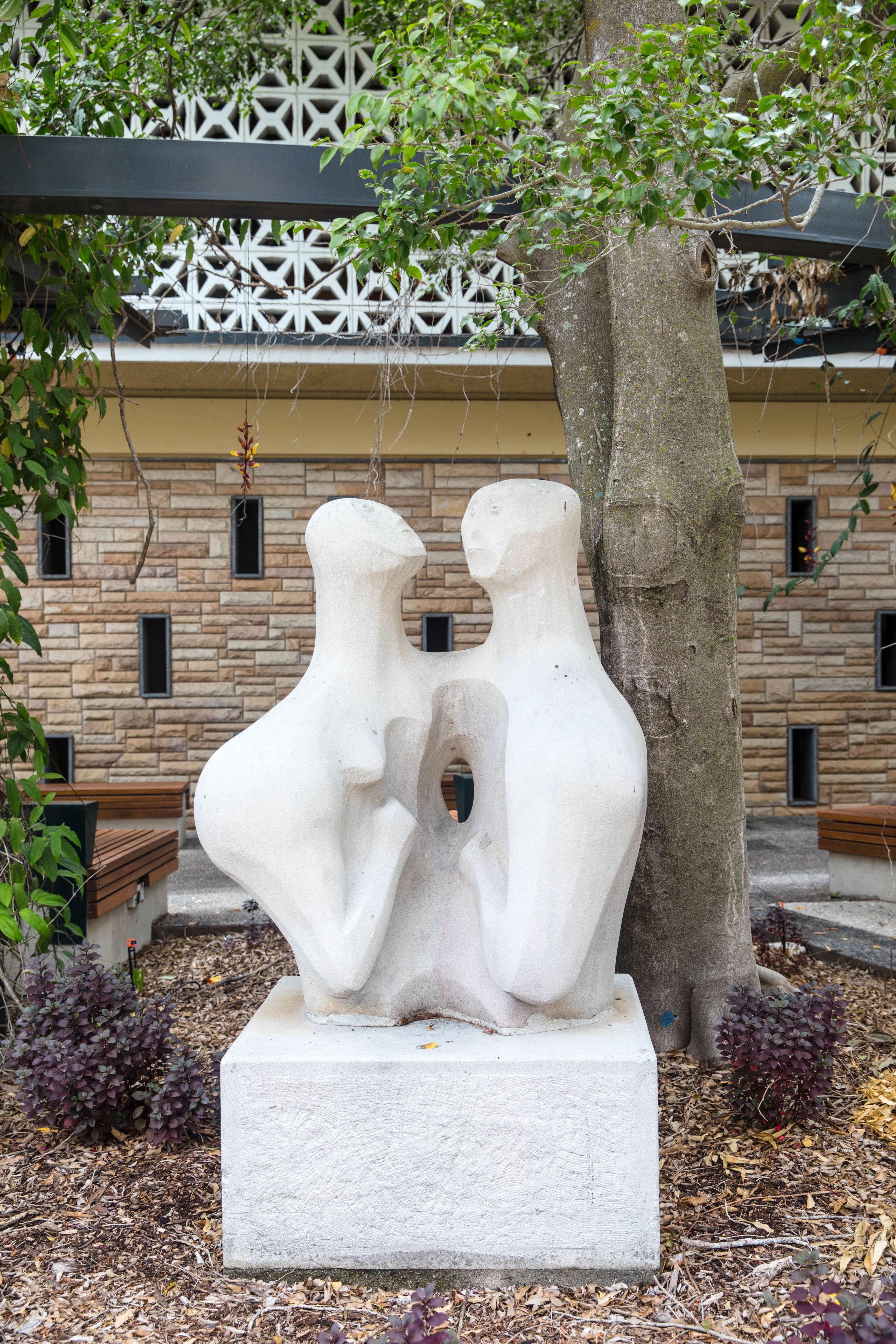
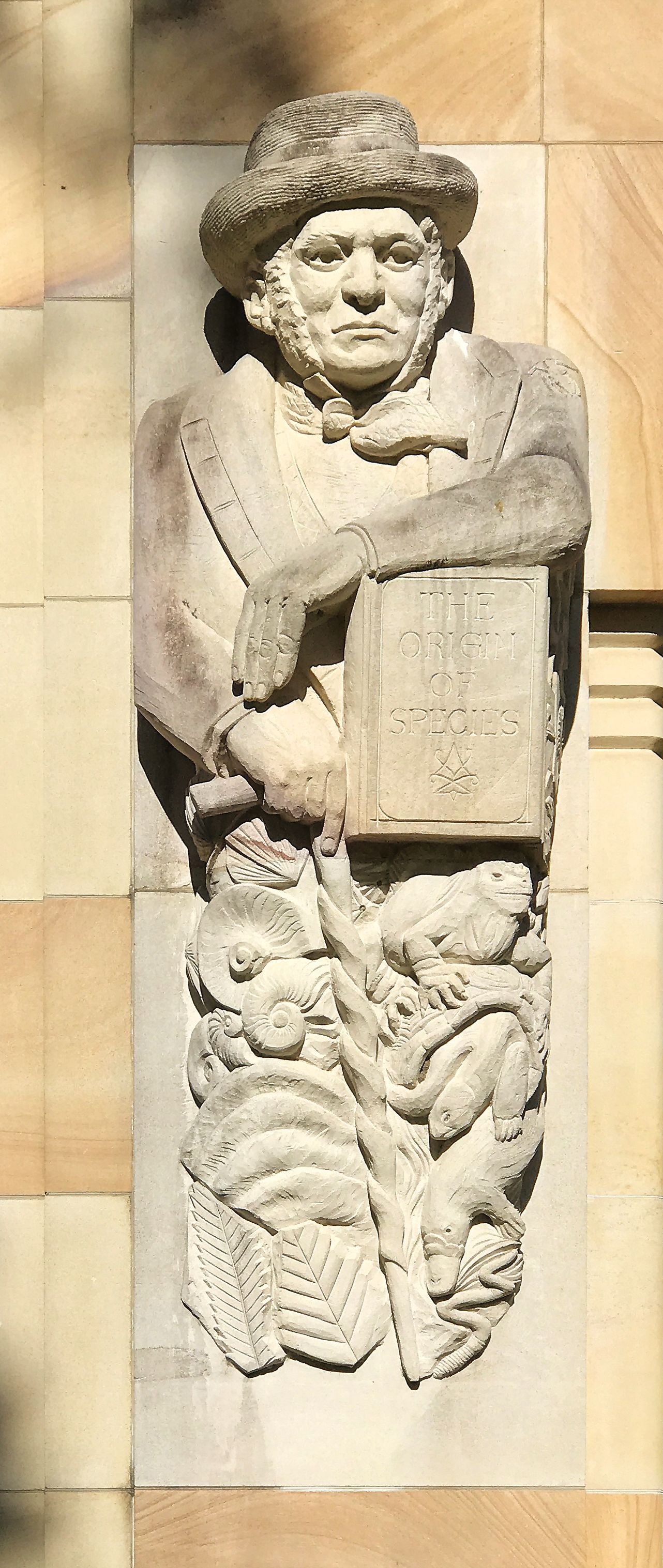
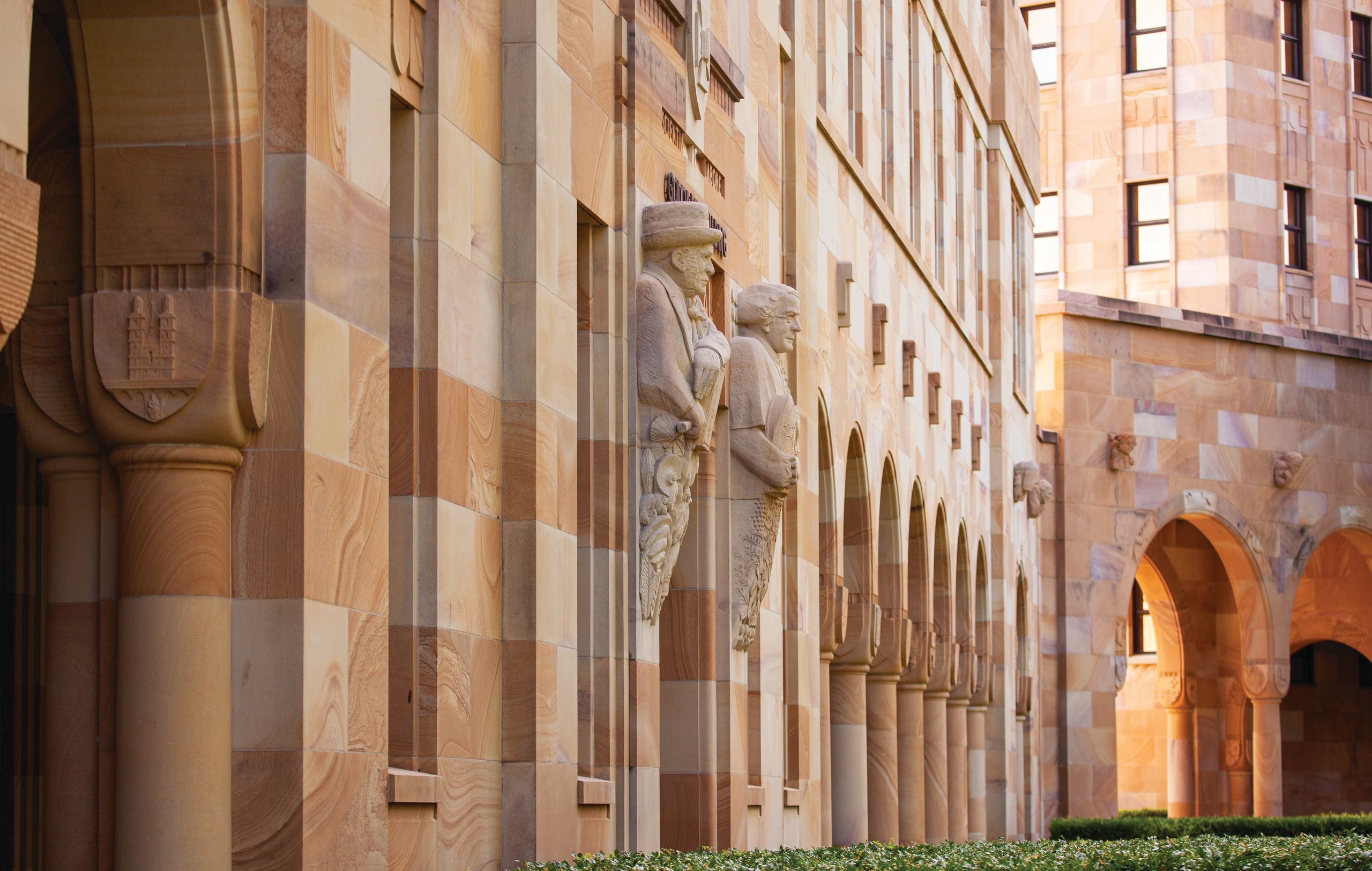
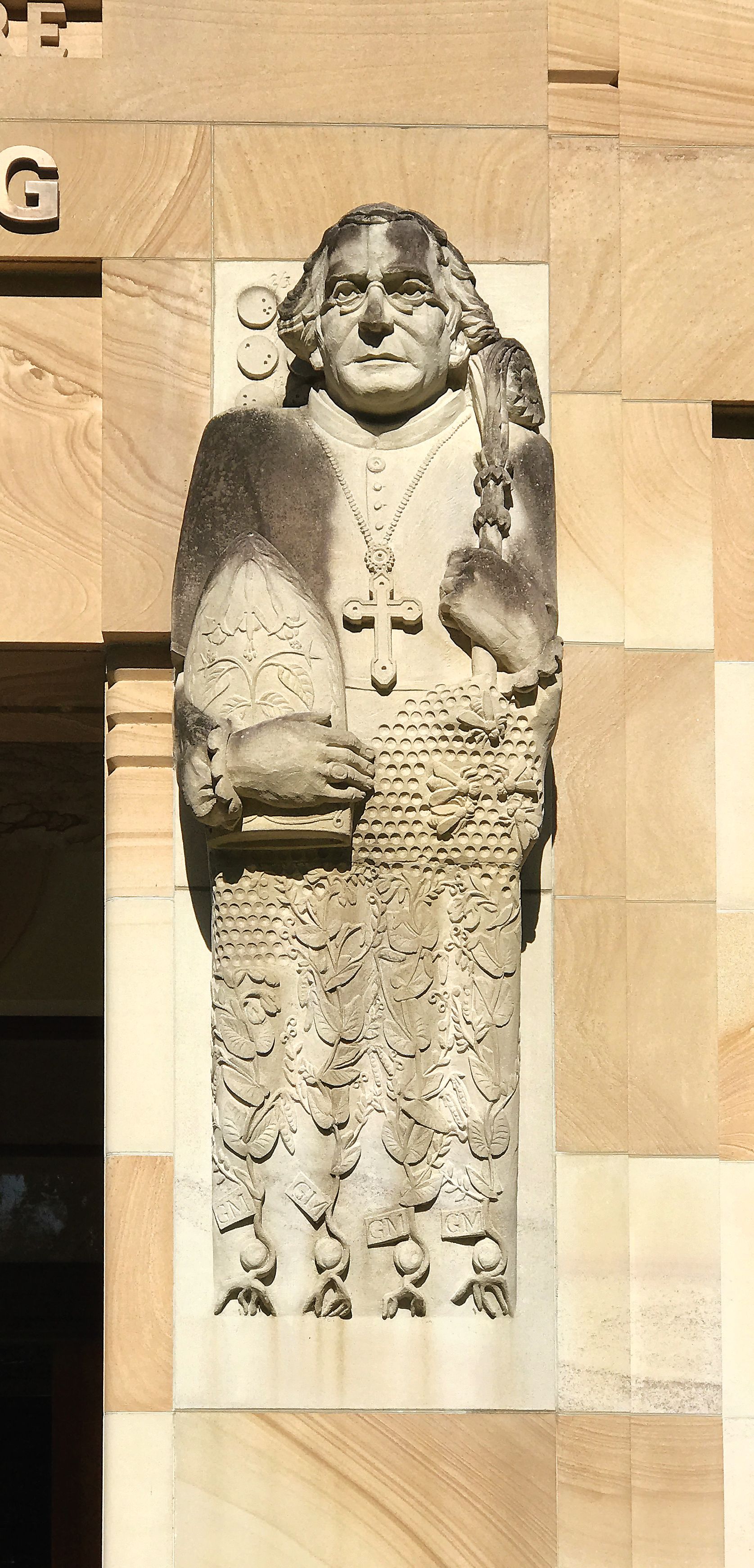
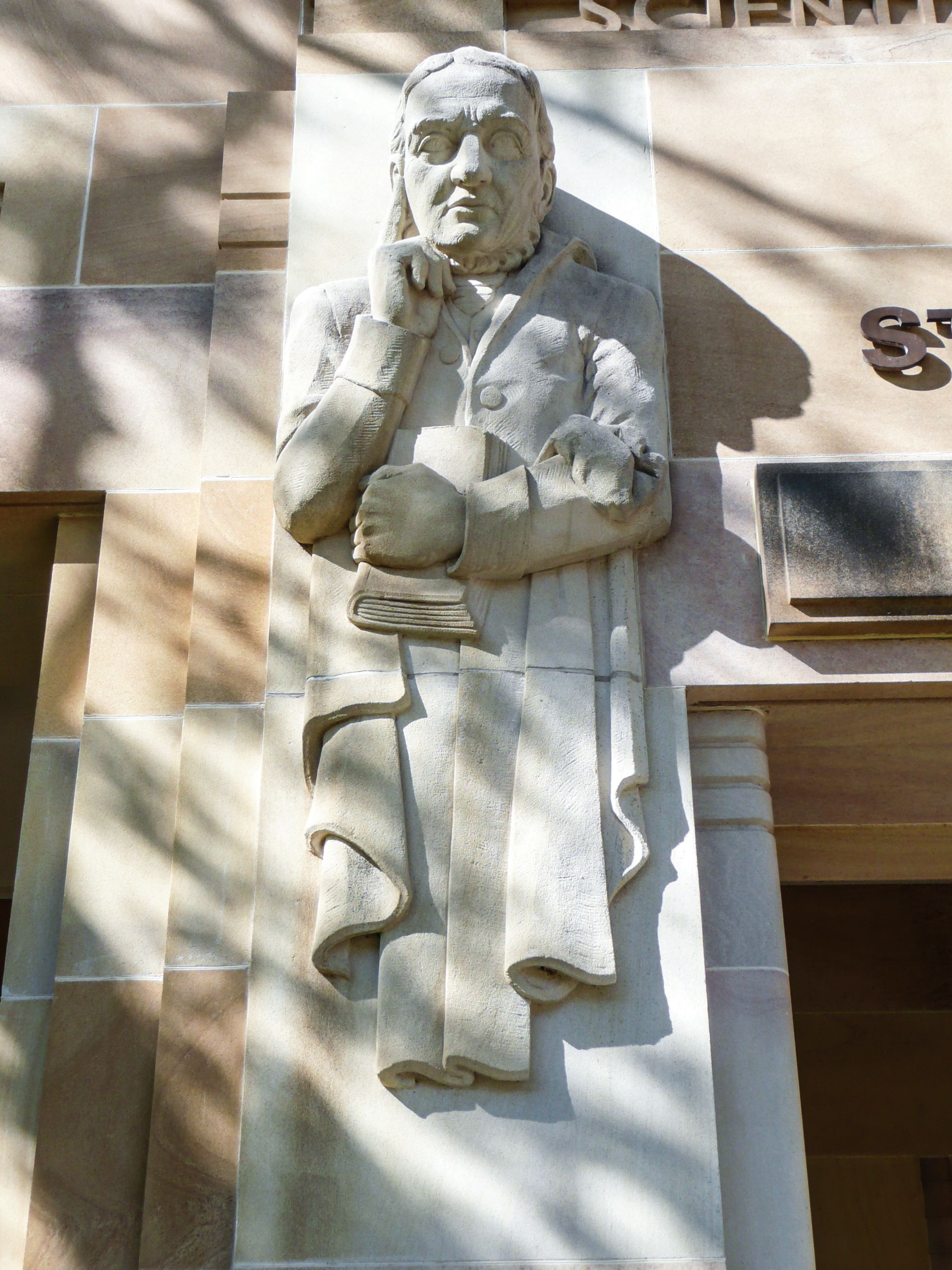
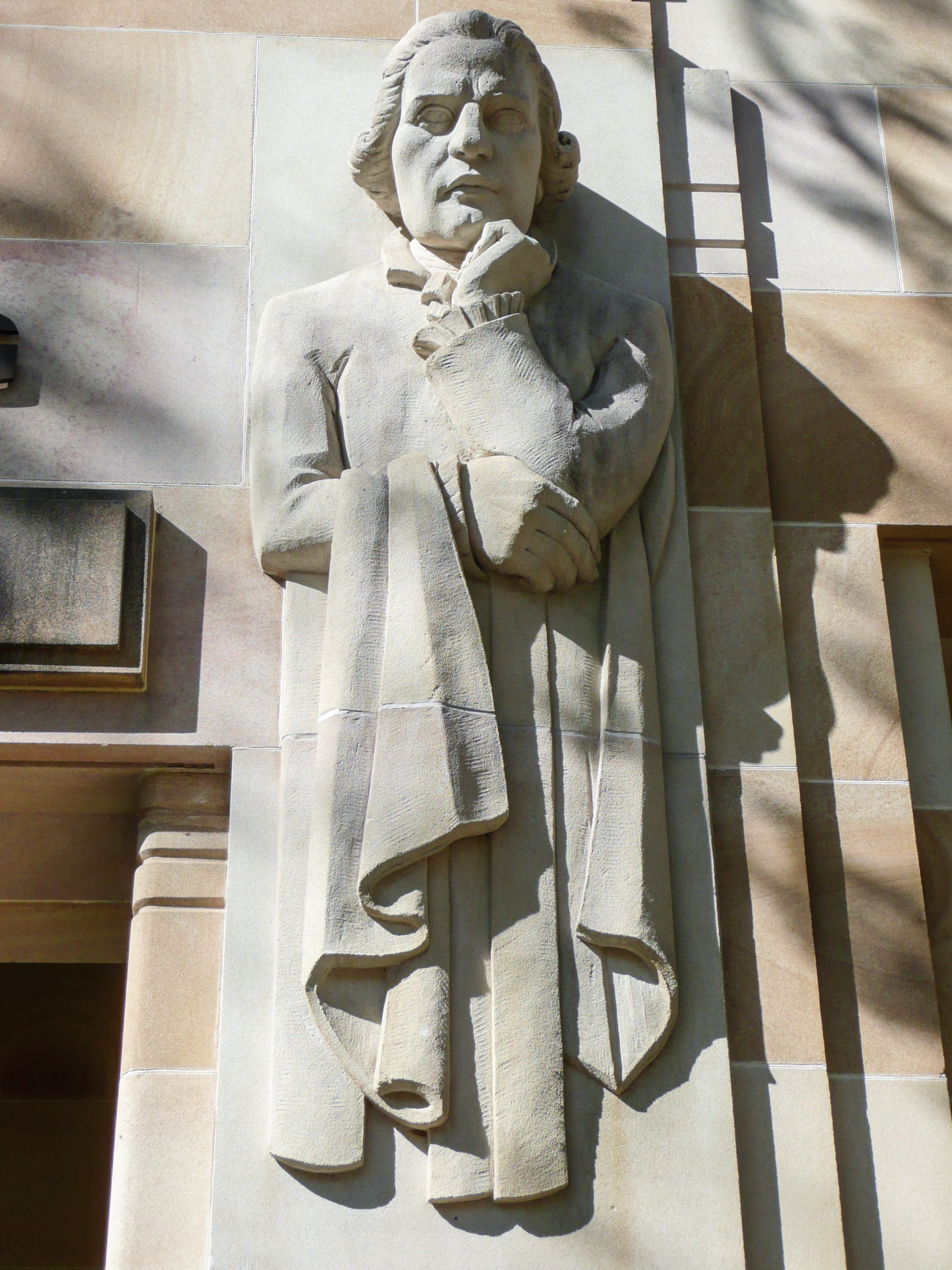
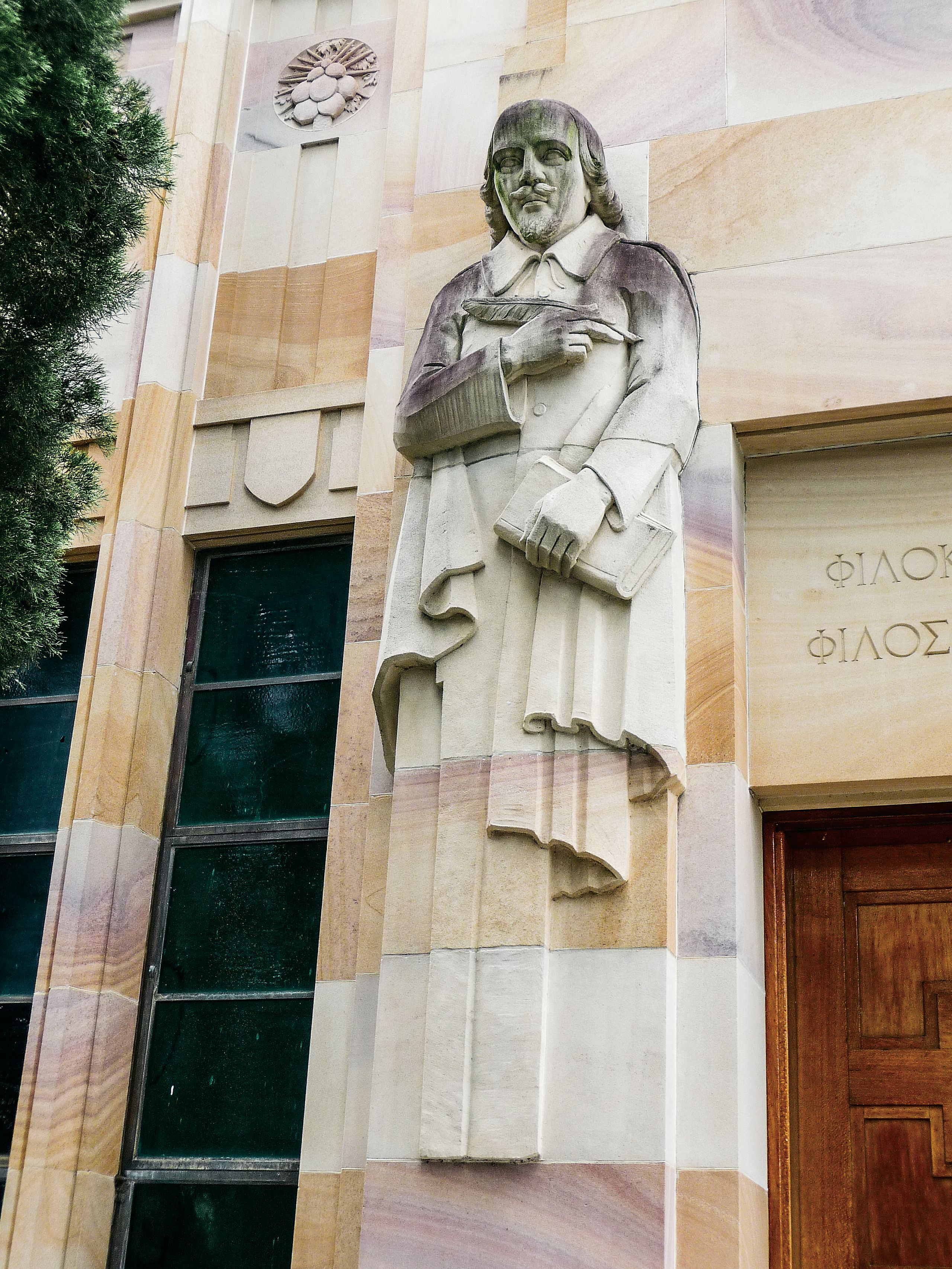
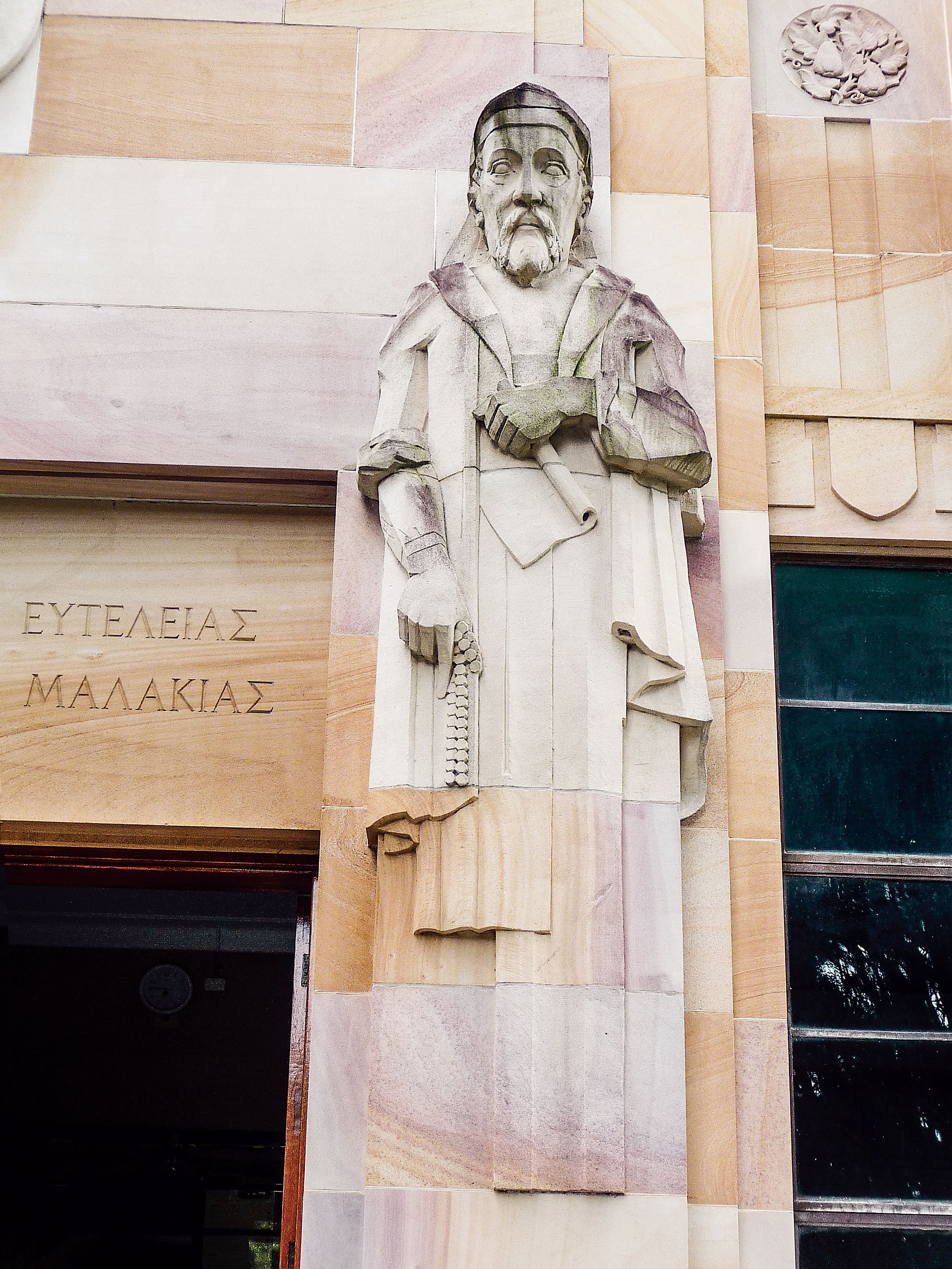
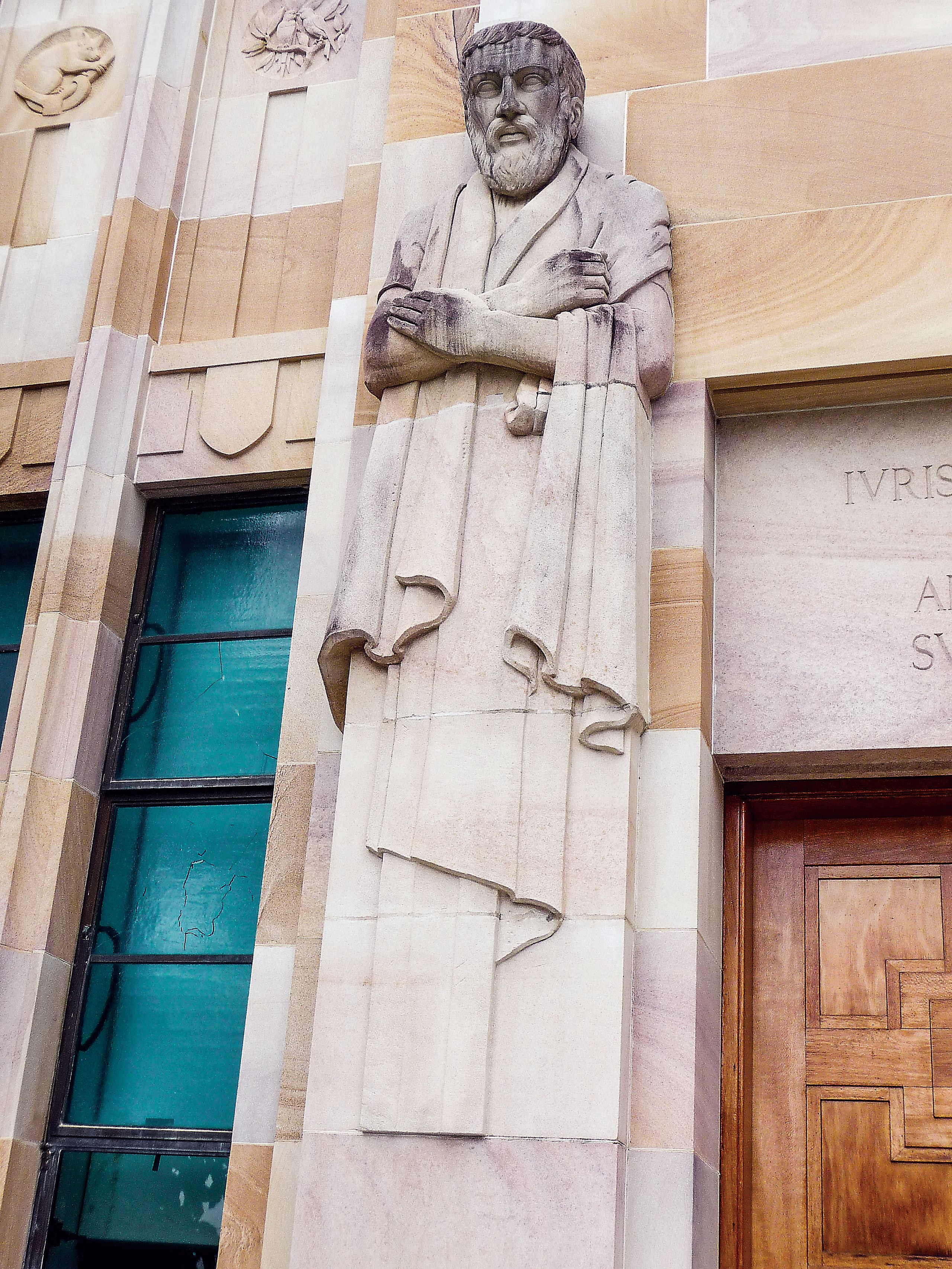
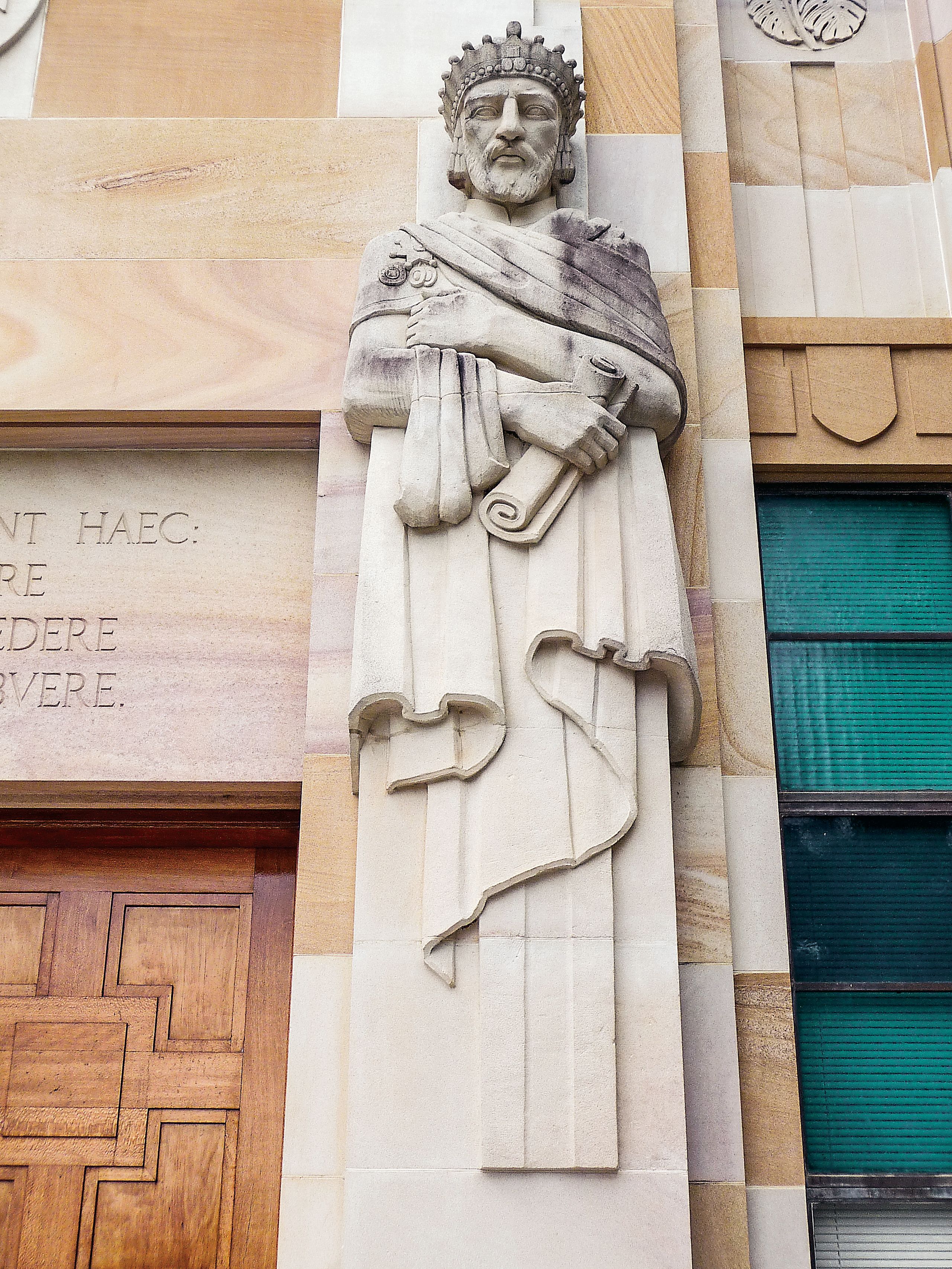

Hippocrates, by Phillip Piperides, 1996, at UQ Herston.
Hippocrates, by Phillip Piperides, 1996, at UQ Herston.

St Vladimir, by George Virine, 1988, at UQ St Lucia.
St Vladimir, by George Virine, 1988, at UQ St Lucia.

Dr Gertrude Langer, by Kathleen Shillam, at UQ St Lucia.
Dr Gertrude Langer, by Kathleen Shillam, at UQ St Lucia.

Union, by Leonard Shillam, 1960, at UQ St Lucia. Collection of The University of Queensland, 1967.
Union, by Leonard Shillam, 1960, at UQ St Lucia. Collection of The University of Queensland, 1967.

Charles Darwin, by Dr Rhyl HInwood, 1989.
Charles Darwin, by Dr Rhyl HInwood, 1989.

The Darwin and Mendel sculptures, by Dr Rhyl Hinwood, 1989, in the Great Court at UQ St Lucia.
The Darwin and Mendel sculptures, by Dr Rhyl Hinwood, 1989, in the Great Court at UQ St Lucia.

Gregor Mendel, by Dr Rhyl Hinwood, 1989.
Gregor Mendel, by Dr Rhyl Hinwood, 1989.

Antoine Lavoisier, by John Muller, 1948, at UQ St Lucia.
Antoine Lavoisier, by John Muller, 1948, at UQ St Lucia.

John Dalton, by John Muller, 1948, at UQ St Lucia.
John Dalton, by John Muller, 1948, at UQ St Lucia.

William Shakespeare, by John Muller, pre 1953, at UQ St Lucia.
William Shakespeare, by John Muller, pre 1953, at UQ St Lucia.

Geoffrey Chaucer, by John Muller, pre 1953, at UQ St Lucia.
Geoffrey Chaucer, by John Muller, pre 1953, at UQ St Lucia.

Justinian I, by John Muller, pre 1953, at UQ St Lucia.
Justinian I, by John Muller, pre 1953, at UQ St Lucia.

Plato, by John Muller, pre 1953, at UQ St Lucia.
Plato, by John Muller, pre 1953, at UQ St Lucia.
Further down in the Great Court are two more wall statues of scientists, carved by the first University Sculptor John Muller in 1948. At the left of the entrance to the Steele building is Antoine Lavoisier (1743–94), the French chemist who discovered oxygen and overthrew the theory that fire was a separate element from air.
To the right of the Steele building entrance is a representation of John Dalton (1766–1844), an English chemist whose research on the expansion of gases led to ‘Dalton’s Law’ of partial pressure and atomic theory, the underlying theory of chemistry since its acceptance.
On the outer perimeter of the Great Court at the left of the Arts exterior entrance is a depiction of William Shakespeare (c.1564–1616), a professional actor and playwright of world renown. Author of at least 36 plays, his works have been translated into almost all national languages and are still regularly performed and enjoyed across the globe more than 400 years later. This statue was created by John Muller in the 1940s or ’50s.
At the right side of the Arts exterior entrance is Geoffrey Chaucer (c.1343–1400), a diplomat and civil servant in late Medieval England who wrote fictional poetry and prose. His best-known work The Canterbury tales was immediately popular and went on to become one of the first small group of books printed by Caxton in England in 1477, helping to establish Chaucer’s London dialect as the literary standard form of the English language.
Finally, outside the Law exterior entrance on the left, is a wall statue of the Roman emperor Justinian I (483–565 CE), depicted with a crown and scroll. Most famous for codifying the entire Roman law in the Digests, which served as the basis of the legal codes of much of medieval and modern Europe, he was also responsible for finally closing the Academy, founded by Plato 900 years earlier in order to secure God’s favour.
Fittingly, Justinian is flanked at the right of the Law exterior entrance by a depiction of Plato (428–347 BCE) himself, founder of one of the great schools of philosophy. Containing a searching criticism of society in the form of describing an ideal state, his most famous philosophical text The republic is still studied widely today. Plato taught in an Athens district called the Academy, and since then, the word ‘academic’ has been used in connection with universities.
Be sure to check back in next month, as Contact looks at UQ's sandstone carvings.
Words and concept: Suzanne Parker
Artwork and design: James North
Photography: Anjanette Webb
Contributors: Barbara Robinson and Jeremy Crowley
All artworks and artefacts mentioned in this series are located on UQ's St Lucia, Gatton and Herston campuses, and we acknowledge the Traditional Owners and their custodianship of the lands on which the University stands. We pay our respects to their Ancestors and their descendants, who continue cultural and spiritual connections to Country. We recognise their valuable contributions to Australian and global society.

